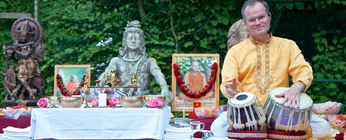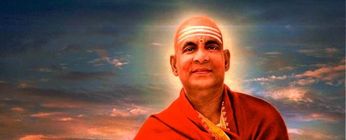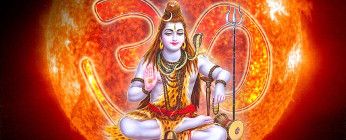
Sukadey (Volker Bretz) - Most important teacher of Hatha Yoga in Germany

Swami Sivananda - teacher of Sukadey (today 128 years old and fit)

Shiva - Tibetan and Hindu deity who has spawned Hatha Yoga


Hatha Yoga
The practice of Asanas strengthens the balance in the body and also guarantees mental balance. Yoga exercises contribute to the relaxation of the body, so that nervous tension can be resolved. Practicing Asanas eliminates diseases and makes the body light, firm and stable. Each Asana can help with a certain physical ailment.
After swearing on the Buddhist practice of prostrations for about 20 years, some time ago I got pain in my shoulders, so I had to give up the practice of prostration. I thought about how I could get rid of this pain, even without painkillers, because the doctor I visited did not find another solution. That's when I came up with an exercise in Hatha Yoga, something I practiced about 25 years ago. With this exercise (Cross?) this pain was then eliminated within a week.
It is clear to me that I will take up the Hatha-Yoga, in connection with the Dzogchen meditation, again.
Here is a general explanation of the term «Asana», followed by four seated attitudes. This is followed by the explanation of the «Position of dead» in preparation for a Hatha Yoga round. The preparation includes breathing techniques as well as the previously mentioned «Cross», which is easy to do especially by beginners, followed by the «Sun Salutation» as a warm-up exercise. 25 descriptions of «Asanas» complete the picture. For almost everything there are several video tutorials and you can still get a lot of additional information on the page https://wiki.yoga-vidya.de/.
Content of this Series
There are four ways to sit in meditation:
Padmasana — the lotus
Siddhasana — the position of the perfect
Muktasana — the liberated position
Sukhasana — simple, pleasant position
Whenever you feel the need to rest a little more, then, at the beginning and end of each Hatha Yoga session, rest by relaxing.
Shavasana — Position of a corpse, resting position or death position (often beginning and end position in Hatha Yoga)
Now follows a few preparatory exercises that should not be missed in any Hatha Yoga round.
Gentle Kapalabhati
Medium-heavy Kapalabhati
Intense Kapalabhati
Slow Kapalabhati
Medium fast Kapalabhati
Fast Kapalabhati
Very fast Kapalabhati
Mutual Kapalabhati
Kapha Kapalabhati
Chandra Kapalabhati
Surya Kapalabhati
Plavini Kapalabhati
Ujjayi Kapalabhati
One-sided and reciprocal Kapalabhati with Bahir Kumbhaka
This in advance. Are you ready to start? If yes, then click here.
Finally, there are explanations of various Asanas with variations that belong to the Asana. So you can practice Hatha Yoga individually according to your possibilities. The Asanas are good for the body, but a short Asana round (for example: Cross, Sun Salutation and Dead Posture) is also well suited as a preparation for sitting meditation.
Garudasana — Eagle
Dhanurasana — Bow
Shirshasana — Headstand
Sarvangasana — Shoulderstand
Balasana (also Garbhasana) — Position of the child
Halasana — Plow
Matsyasana — Fish
Setubandhasana — Bridge
Paschimottanasana — Forward Bend
Purvottanasana — Inclined Plane
Bhujangasana — Cobra
Shalabhasana — Grasshopper
Ardha Matsyendrasana — Sitting turned
Kakasana — Crow
Mayurasana — Peacock
Padahastasana — Standing Forward Bend
Trikonasana — Triangle
Navasana — Boat
Makarasana — Crocodile
Adhvasana — Abdominal relaxation
Majariasana — Cat
Tadasana — Hill position
Adhomukhashvanasana — Dog
